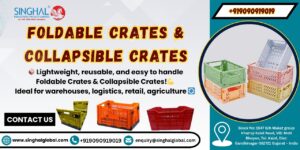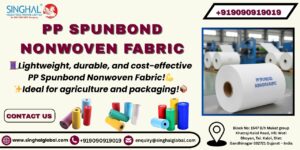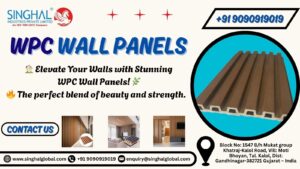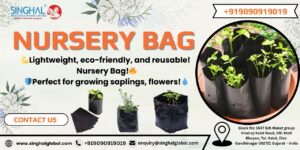Biaxial-oriented polypropylene (BOPP) films are a significant factor of modern packaging solutions, finding various applications across several industries due to their increased features and flexibility. BOPP films are manufactured by enlarging polypropylene film both in the machine direction and across the machine direction, which increases their strength, clearness, and barrier features. This article explores into the different applications of BOPP films, highlighting their crucial role in modern packaging and beyond.
Food Packaging
One of the major applications of BOPP printed film is in the food packaging industry. These films are favored for their outstanding moisture barrier features, which help in conserving the freshness and spreading the shelf life of food products. The high clearness and gloss of BOPP films also make them perfect for showcasing the item inside, making them widespread for packaging snacks, confectionery, baked goods, and fresh products.
Key Advantages in Food Packaging:
Barrier Protection: BOPP printed film safeguard against dampness, oxygen, and odors, keeping the quality of food items.
Graphic Appeal: The film’s high clearness and gloss increases the product’s visual appeal on retail shelves.
Printability: BOPP films are effortlessly printable, enabling for vibrant and high-resolution graphics that entice shoppers.
Labeling
BOPP films are widely utilized in the labeling enterprises. They deliver a stable, eye-catching, and cost-effective choice for labeling a broad range of items. Their outstanding printability and adhesion features make them appropriate for both pressure-sensitive labels and wrap-around brands.
Key Advantages in Labeling:
Adaptability: Appropriate for different kinds of labels, containing clear, white, and metallized labels, BOPP films proposes adaptability in branding and item information display.
Industrial Applications
In the industrial sector, BOPP film printings are utilized for laminating items, which increases the durability and performance of different items. They are also utilized in adhesive tapes, where their strength and clarity are beneficial.
Key Advantages in Industrial Applications:
Strength and Sturdiness: BOPP films deliver superior tensile strength, making them perfect for needing industrial uses.
Protection: When utilized in laminates, BOPP films safeguards printed fabrics from wear and tear, increasing the life of the item.
Fabric and Apparel Packaging
The fabric and apparel industry uses BOPP films for packaging clothing and accessories. The film safeguards the items from dust, moisture, and harm during shipping and transportation.
Key Advantages in Textile Packaging:
Clearness: High clearness films enable buyers to view the product without opening the item, increasing the shopping experience.
Protection: A Printing on BOPP film proposes exceptional safety against environmental aspects, assuring the quality of fabric items is preserved.
Medicinal Packaging
In the pharmaceutical enterprises, BOPP films are utilized to package medicines, medical devices, and other healthcare items. Their barrier features are important in safeguarding sensitive items from contagion and degradation.
Key Advantages in Pharmaceutical Packaging:
Safety and Hygiene: BOPP films deliver a hygienic shield that safeguards pharmaceutical items from external pollutants.
Regulatory Compliance: These films can be produced to fulfill strict regulatory criteria required for pharmaceutical packaging.
Packaging Queen BOPP Film
BOPP is also known as the “packaging queen” in the packaging film enterprises. It plays a crucial role in the adaptable packaging industry. Since the end of the 1970s, the kind of BOPP has also been endlessly enhanced, adding luster to the world of plastics.
Polypropylene films that are strained in cross directions and machine are named as Biaxially Oriented Polypropylene (BOPP) films. BOPP has received incredible admiration as a high-growth film as it is an outstanding fence for water vapor, functions as a barrier to greases and oil, can be recycled, and is not affected by climate changes. The various kinds of BOPP films include heat sealable, pearlized, thermal lamination, glossy, matte, and printable film. BOPP film manufacturers prioritize films with the increased quality standards and layouts for higher performance.
The biodegradability and non-toxic aspects of BOPP films make it one of the most eco-friendly films on the market. With the developing awareness about environmental and pollution issues, it is more crucial than ever to consider such worries.
Key Highlights
Printing on BOPP films are progressively adopted in the fields of applications like packaging, labeling, and lamination. These films are the favorite substrate for food packaging worldwide, owing to their inherent dampness barrier properties and sealability. Over the last few years, the requirement for BOPP film has enhanced to 3.5% per annum. The requirement for flexible packaging has boosted BOPP film.
Innovations in BOPP Films
Recycled Packaging
Packaging must accomplish various criteria to be recycled, containing separability, labeling, coloring, and sanitation. BOPP filmmakers are trying to fulfill these criteria with innovative package designs and by delivering recyclable items.
The Bioplastics Revolution
Another priority is utilizing superior biopolymers as a substitute for fossil-fuel-based fabric. They help in reducing production’s carbon footprint, which has substantial inferences for sustainability.
The Impact of the Customer of BOPP film printing
Concerning boosting the sturdiness of packaging fabrics, communicating with consumers about the best method to utilize and reuse packaging is equally important. Your efforts to create sustainable packaging will pay off when consumers are conversant about utilizing, managing, and recycling packaging.
Conclusion: A Multipurpose Packaging film in a nutshell
BOPP films continue to develop to fulfill the dynamic requirements of the packaging industry, proposing an extensive array of categories, applications, and innovative solutions. From plain films to high-barrier and bio-based choices, BOPP films play an important role in increasing product visibility, shelf life, and sustainability across different sectors. As technology advances and sustainability concerns grow, the future of BOPP films lies in continuous improvement, driving towards eco-friendly, functional, and high-performance packaging choices.
BOPP films are omnipresent daily, though their presence frequently goes unnoticed. Due to their excellent features and versatility, BOPP films have revolutionized the packaging enterprises and become essential in different sectors. From food packaging to industrial applications, BOPP films play a important role. This blog post discovers the types of BOPP films. We hope this blog will help you find a great stretchy packaging solution in various sectors.
Frequently Asked Questions (FAQs)
What is the future of Bopp film?
The worldwide BOPP films market size is predictable to rise from USD 24.26 billion in 2020 to USD 31.42 billion by 2025, at a Compound Annual Growth Rate (CAGR) of 5.3% during the estimate year.
Is Bopp waterproof?
BOPP is waterproof and sturdier than our paper materials, making it a countless choice for any indoor application.
What is Bopp films used for?
BOPP film is normally utilized for an application that needs moisture confrontation, optical clarity and high tensile power such as: Food & Beverage Packaging.









